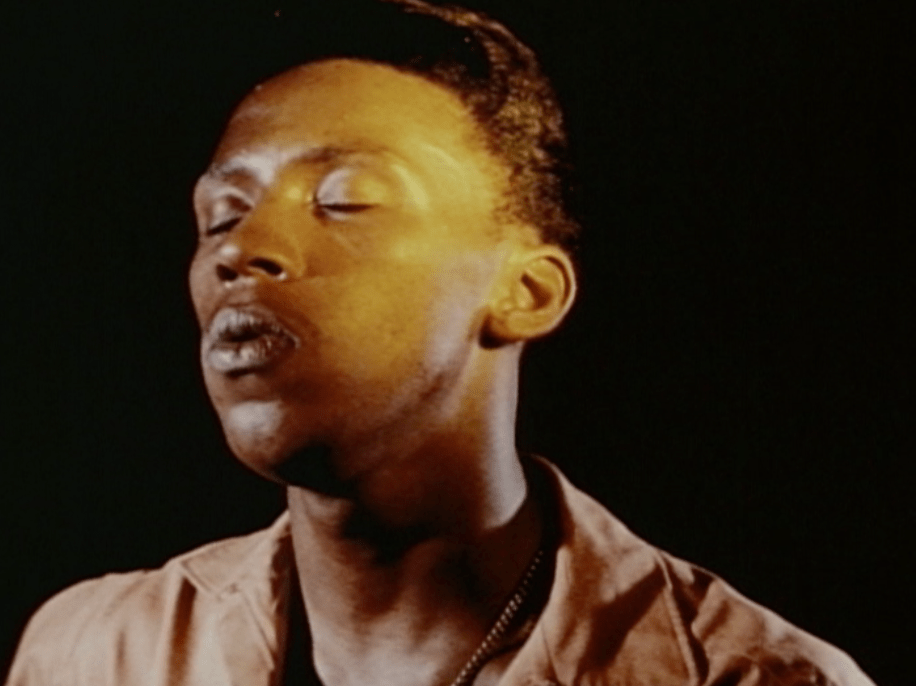3 Films by Don B. Klugman

Nightsong is a rare and unique portrait of the Chicago Near-North folk club and nightlife scene in the mid-1960’s, its real significance lying in its critical depiction of the racial and sexual tensions present in mid-1960’s Chicago. The story centers around the struggles and romantic desires of the film’s protagonist, long-forgotten African-American folk sensation Willie Wright. The backdrop of Nightsong is the vibrant folk and nightclub scene in Chicago in the mid-1960’s, and the film features rare exterior and interior footage of legendary hot spots such as The Fickle Pickle, Mr. Kelly’s, the Kismet Club, the Esquire, and the Tender Trap. Nightsong contains what is likely the only extant performance footage of Willie Wright, an African-American performer who crossed from the doo-wop and soul music scenes of Chicago’s South Side into the Near-North side’s burgeoning folk music community. Wright, who gives an incredibly charming and heartfelt performance both on stage and as the film’s protagonist, a man struggling for respect and survival as an African-American artist in a primarily white musical genre and neighborhood, achieved a small amount of recognition in the 1960’s for his folk performances, but quickly fell into obscurity.
Wright’s roots were in the Chicago doo-wop scene, and he got his start playing in a group that formed out of Cabrini Green called the Medallionaires. After having not succeeded in three successive doo-wop groups, Wright decided that there had to be a better way. Since folk music had become all the rage in the mid-1960’s, and with the remarkable success of black performers such as Harry Belafonte, Josh White, Odetta, and John Lee Hooker singing folk music in coffeehouses, Wright decided that he would become a folk singer too. His decision was aided by Chloe Hoffman, who, according to the Chicago Defender, suggested that he try folk music. Hoffman provided him with a guitar and some albums of folk songs and Willie returned three months later – a selfmade folk singer. Willie Wright is the glowing focal point of Nightsong, and while he released two self-titled folk albums on local labels in the late 1960’s, hasn’t performed since the early 1970’s when he was severely disabled, losing the use of both of his legs.
Nightsong won the “Coupe Kodak-Pathe” prize at Cannes in 1965, was named one of the “Ten Best Winners” in the Amateur Cinema League’s 1964 International Film and Video Festival, and was acknowledged at the time of its release for its extraordinary and expressive use of color.
I’ve Got This Problem, released in 1966, was a collaborative production between Don Klugman, Ron Clasky, Judy Harris, Josephine Forsberg, and Mike Shea, among others (gathered under Klugman’s production group “The Problem Company”). The film was formerly distributed by Walter Reade, CCM, and Films Incorporated, won awards at the Cork, Edinburgh, Mannheim, Melbourne, Sydney, and American Film Festivals, and screened in theatrical release in the United States before Peter Watkins’ The War Game.
I’ve Got This Problem traces the development of a romantic relationship between a young man and woman (played by Klugman and Judy Harris) who meet in a downtown Chicago coffee shop. Their unconventional attraction to one another is based in their mutual ability to analyze each other’s actions, which range from the quotidian (whether or not to have sugar, and how many lumps, in one’s coffee) to the psycho-sexual (relayed in his remembered Oedipal dreams and her guilt-ridden dates with Ferrari-driving playboys). The non-stop dialogue between the couple fluctuates between playful psychobabble and sincere attempts to relay their innermost feelings and sense of displacement in modern society. The film’s humor is based in their relentless self-analysis and superficial adaptation of the tropes of psychoanalysis, yet this overt criticism of the popularity of psychoanalytic discourse in the mid-century is matched by the ridiculous futility of Klugman and Harris’ sincere attempts to analyze the greater ills of society by means of a conscious turn inward. In keeping with the film’s movement between humor and a more serious criticism of the role of psychoanalysis in the public consciousness, the film intercuts between shots of the couple talking, and scenes of them interacting in 1960’s Chicago.
You’re Putting Me On, released in 1969, traces the same aesthetic style, themes, and criticism of pop psycho-analysis present in You’re Putting Me On, and seems to pick up the same couple, again played by Klugman and Harris, a few years into their relationship. It was also produced by Klugman’s “The Problem Company”, previously distributed by Walter Reade and Radim, won awards at the Cork, Edinburgh, and Sydney Film Festivals, and screened in theatrical release in the United States before Michelangelo Antonioni’s Blowup.
You’re Putting Me On follows the young couple from a car to the streets of Chicago, and finally into a swinging 1960’s bohemian party – complete with a bearded, pipe-smoking bouncer, scientific-discourse espousing priest, and a meditating “enlightened soul” wearing only sunglasses, underwear, and knee socks. The couple’s non-stop self-analytical psycho-babble is taken a step further in this film, as they prattle on about their fears of everyday activities such as driving, and the overwhelming complexity of mechanized objects such as lipstick tubes. Their incessant, free-association style dialogue centers around their desire for real emotional connections and difficulties in achieving true intimacy. As the two encounter the party-goers, they pocket various personal items from them – including a lighter from the priest and the wallet of a young, self-absorbed, neurotic sex-kitten. You’re Putting Me On ends with the couple, still engaged in analysis, talking in bed about the difficulty of overcoming the obstacle of a rumpled sheet that separates their two bodies. Combining a sense of humor and social criticism similar to that in I’ve Got This Problem, You’re Putting Me On pushes Klugman’s comedic commentary on the inability (or unwillingness) of young people to move beyond self-absorption into the realm of political activism to new and outrageous heights.
Nightsong, I’ve Got This Problem and You’re Putting Me On, are extraordinary examples of experimental films made by a director who is primarily known for commercial, industrial, and educational filmmaking. As of 2007, Mr. Klugman teaches presentation skills and commercial production at Columbia College in Chicago, and has worked as a producer, scriptwriter, director, cameraman, and stage manager for various films and audio-visual corporations. He earned a Master’s Degree in Cinema and Television at the University of Southern California, and his films, I’ve Got This Problem and You’re Putting Me On, have won awards at Cork, Edinburgh, Mannheim, Melbourne, Sydney, and The American Film Festival. Nightsong’s producer, Marv Gold, was extremely active in the local Chicago experimental and commercial film community in the 1960’s. Nightsong also features rare early footage of Second City performer Avery Schreiber, who went on to work with Jack Burns in the comedy duo Burns and Schreiber.



